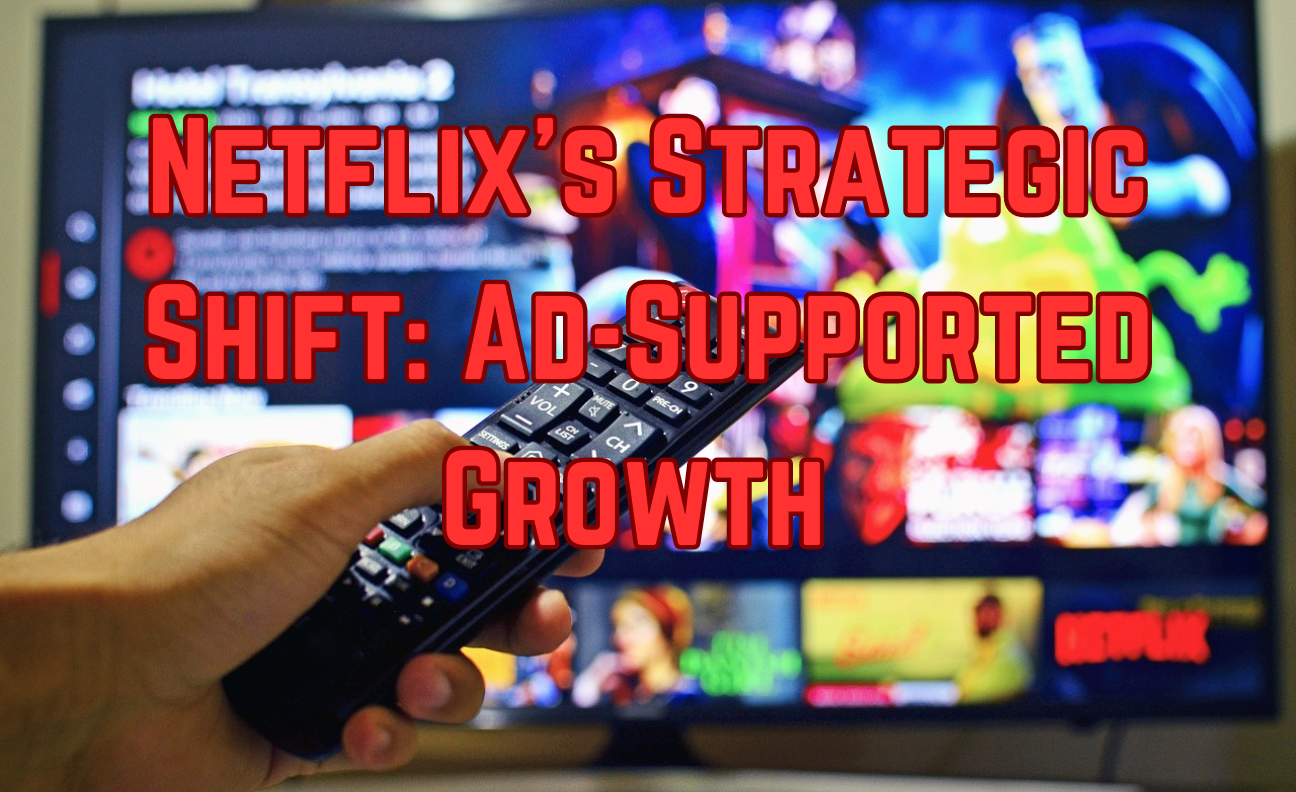Netflix, the streaming giant that revolutionised how the world consumes media, is making significant strategic changes to its business model.
In a bid to bolster revenue and adapt to changing market dynamics, Netflix is phasing out its cheapest ad-free plan in Canada and the United Kingdom, with plans to implement similar changes in the United States and France.
This move comes on the heels of a robust Q2 2024 performance, where the company reported significant growth across various metrics.
A Transformative Quarter
Netflix’s Q2 2024 results surpassed expectations, highlighting the company’s ability to innovate and adapt. The streaming service added eight million global subscribers during this period, bringing the total to 277.65 million, a 16.5% year-over-year increase.
This surge in subscribers was accompanied by impressive financial metrics: revenue reached $9.56 billion (approximately £7.37 billion), marking a 17% year-over-year increase, while net income soared to $2.15 billion (approximately £1.66 billion), up 44% from the previous year.
One of the standout elements of Netflix’s recent growth is the increasing popularity of its ad-supported plan. This lower-priced tier has gained significant traction, now accounting for over 45% of new signups in markets where it is available.
This shift suggests a broader change in consumer preferences and a potential realignment of Netflix’s business model.
The Rise of Ad-Supported Streaming
The growing appeal of the ad-supported tier is a crucial development for Netflix. As the company phases out its cheapest ad-free option, the ad-supported plan offers a more affordable entry point for new subscribers.
This tier’s success indicates that a substantial portion of Netflix’s audience is willing to tolerate ads in exchange for lower subscription costs.
Furthermore, Netflix’s ad-supported plan is not only attracting new subscribers but also creating new opportunities for advertisers. With more subscribers on the ad-supported tier, the available ad inventory increases, allowing advertisers to reach a broader and more diverse audience.
This development is particularly significant as Netflix continues to enhance its advertising capabilities.
Innovations in Advertising: Pause Ads
As part of its evolving strategy, Netflix is experimenting with innovative advertising formats, including pause ads. These ads appear when viewers pause content, offering a unique way to engage with audiences without interrupting their viewing experience.
This approach aligns with Netflix’s broader goal of integrating ads seamlessly into the user experience.
The introduction of pause ads is part of Netflix’s broader effort to make advertising a more meaningful contributor to its business. In its Q2 earnings report, the company noted that ad revenue is growing nicely, reinforcing the importance of this revenue stream in its future plans.
Interestingly, the growing ad revenue is becoming a more significant part of Netflix’s overall financial health.
Changing How Growth is Reported
Starting next year, Netflix will change how it reports growth, focusing on revenue by region instead of subscriber numbers. This shift reflects the company’s evolving business model and its emphasis on advertising and subscriber retention.
By highlighting regional revenue, Netflix aims to provide a more accurate picture of its financial health and the effectiveness of its strategies.This change in reporting comes as Netflix anticipates slower subscriber growth in Q3 2024, largely due to the diminishing impact of paid sharing.
However, the company remains optimistic about its long-term prospects, particularly as it continues to enhance its ad-supported offerings and explore new revenue streams.
The Bigger Picture: Why It Matters
The phase-out of the cheapest ad-free plan and the rise of the ad-supported tier mark a significant shift in Netflix’s strategy. As more subscribers opt for the ad-supported plan, Netflix can increase its ad inventory, providing advertisers with more opportunities to reach a larger audience.
This shift is not just about cost savings for consumers; it represents a fundamental change in how Netflix generates revenue and engages with its audience. For advertisers, this evolution means greater access to Netflix’s extensive and diverse subscriber base.
The growing acceptance of ad-supported streaming offers a fertile ground for innovative advertising strategies, such as pause ads, that enhance the viewer experience while delivering value to advertisers.
Regional Impact and Future Directions
The decision to phase out the cheapest ad-free plan has already started in Canada and the UK, where viewers are adjusting to the new pricing structure.
In these regions, subscribers are increasingly choosing the ad-supported plan, which offers a cost-effective alternative to the remaining ad-free tiers. This trend is expected to continue as Netflix rolls out similar changes in the US and France, potentially reshaping the global streaming landscape.
What’s more, Netflix’s focus on ad-supported growth aligns with broader industry trends. As more consumers seek affordable streaming options, ad-supported models are becoming more prevalent.
This shift could lead to a more competitive market, with other streaming services likely to follow Netflix’s lead. By prioritising advertising and regional revenue growth, Netflix is positioning itself to stay ahead of these trends and maintain its leadership in the streaming industry.
Conclusion
Netflix’s decision to phase out its cheapest ad-free plan and the growing popularity of its ad-supported tier signal a transformative period for the streaming giant. With a strong Q2 performance and strategic innovations in advertising, Netflix is poised to capitalise on new revenue opportunities while adapting to changing consumer preferences.
As the company shifts its focus to regional revenue reporting and continues to experiment with innovative ad formats, it is clear that Netflix is committed to maintaining its position as a leader in the streaming industry.
The evolution of Netflix’s business model underscores the dynamic nature of the streaming market and the company’s ability to innovate in the face of change.









